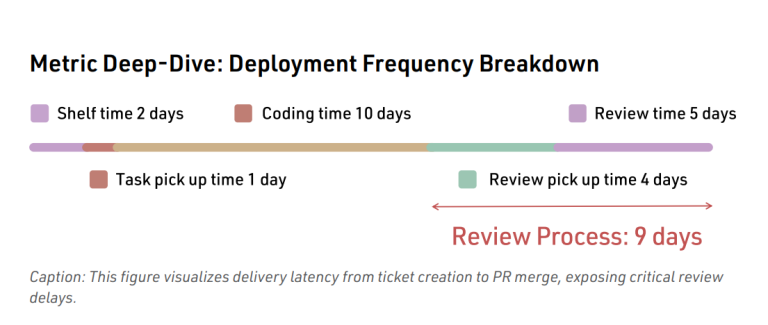
From Clicks to Context: The Quiet Revolution in Software
Read moreRead moreSoftware Engineering Intelligence (SEI) platforms uncover the hidden delays slowing delivery, from bloated PRs to idle reviews. Here’s how the right metrics can unlock serious momentum.

You’re running Agile ceremonies like clockwork.
The team is experienced, motivated, and the burndown chart looks great.
But new features still take way too long to reach production.
Sound familiar?
If your engineering team feels slower than it should be, you're probably not seeing the full picture. And that’s not your fault. Most teams rely on sprint boards, task trackers, and status updates that only tell part of the story. The rest? It’s buried in tools like Git, CI/CD pipelines, and pull request histories. Hidden. Untapped. Unused.
That’s where Software Engineering Intelligence (SEI) platforms come in.
Good question. In plain terms, an SEI platform connects to all the tools your developers already use, Jira, GitHub, GitLab, CI/CD systems, and pulls out useful data that helps answer questions like:
It takes the messy “exhaust” from your workflows and turns it into clear, usable insights. The kind that let you actually fix what’s broken, not just talk about it.
Let’s say your PRs are getting stuck, and no one really knows why. One team featured in our whitepaper faced this exact problem. They had a mature Agile setup, strong team, well-run sprints, but their deployment frequency wasn't improving.
After integrating an SEI platform, the issue became crystal clear:

In short, review cycles were silently killing delivery speed.
Once they saw the numbers, they made a few changes:
The result? Deployment frequency went up in just two sprints.
You might think your team’s biggest blocker is backlog size or resourcing. But it might actually be:
And the thing is, you won’t see any of this in Jira.
SEI platforms expose these blind spots. They also give you benchmarking data, segment lead time into exact stages (task pickup, coding, review pickup, review time), and even highlight risky PRs that could delay or break a build.
We get it. Nobody wants yet another tool or another dashboard.
The good news is that SEI platforms don't add work, they use data from tools your team already touches daily.
The best ones:
They even come with smart alerts and bots that flag idle PRs or ping the right reviewers at the right time, so flow doesn’t stall.
Remote and hybrid work have made async visibility more important than ever. Execs want data, not opinions. Teams want clarity, not more meetings. And AI tools? They need high-quality telemetry to do their jobs well.
In fact, Gartner predicts that 50% of software engineering orgs will adopt SEI platforms by 2027,up from just 5% in 2024. That’s a massive shift and a strong signal that this isn’t just a trend. It’s the future of engineering visibility.
If you’ve ever said:
Then yes, SEI is 100% worth exploring.
We’ve put together a whitepaper that dives deeper into:
And see what your data has been trying to tell you all along.

From Clicks to Context: The Quiet Revolution in Software
Read moreRead more